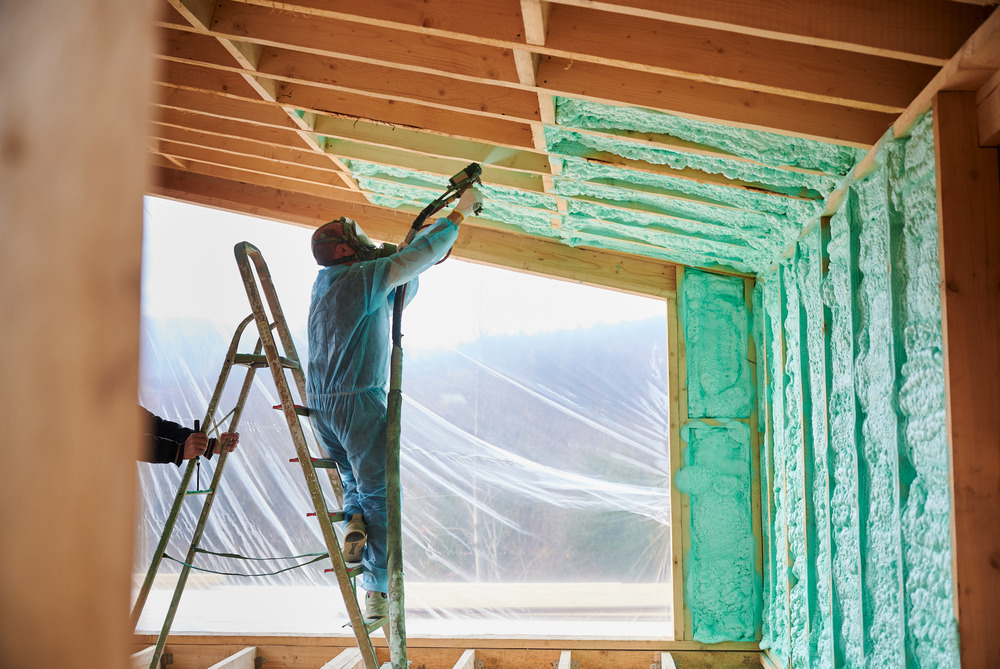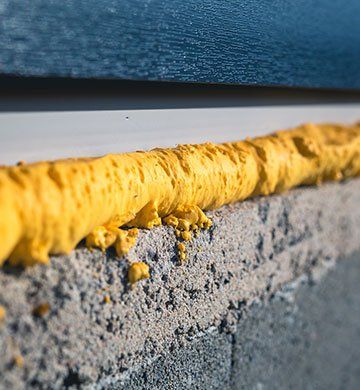Usual Myths Regarding Spray Foam: Debunking the Misconceptions
Usual Myths Regarding Spray Foam: Debunking the Misconceptions
Blog Article
Spray Foam: The Ultimate Service for Air Sealing and Insulation
Spray foam insulation has actually become a leading service for efficient air securing and thermal insulation, providing an one-of-a-kind combination of buildings that set it besides conventional approaches. Its capacity to increase and fill gaps makes it particularly efficient in stopping air leak, which can significantly impact power efficiency. Understanding the full scope of its advantages, installment procedures, and contrasts with other insulation types is critical for making educated choices. As we discover these elements, the implications for both brand-new building and constructions and retrofits end up being progressively significant. What variables should influence your choice?
What Is Spray Foam?
Spray foam is a flexible insulation material that incorporates the principles of air securing and thermal resistance to enhance energy performance in buildings. Made up primarily of polyurethane or various other comparable substances, spray foam is used as a liquid that increases upon contact with surface areas, developing a solid, constant layer of insulation. This unique property enables it to load gaps, fractures, and gaps that traditional insulation materials may forget, providing a remarkable air seal.
There are 2 main types of spray foam: open-cell and closed-cell. Open-cell spray foam is lighter and a lot more adaptable, offering outstanding audio absorption and a lower R-value per inch - Spray Foam. In contrast, closed-cell spray foam is denser, giving a higher R-value, wetness resistance, and included architectural stability to constructing parts
The application process typically includes customized devices, making certain a seamless application that abides by various substratums, consisting of metal, wood, and concrete. This adaptability makes spray foam suitable for both brand-new constructions and retrofitting existing structures. Its capacity to develop an impermeable obstacle dramatically adds to lowering power usage and enhancing indoor air quality, thereby making it a preferred selection amongst home owners and home builders alike.
Benefits of Spray Foam Insulation
One of one of the most substantial benefits of spray foam insulation is its outstanding capability to produce a continuous air barrier, which properly decreases energy loss. Unlike standard insulation materials, spray foam expands to load fractures and gaps, making sure that air leak is dramatically lowered. This particular not only boosts power effectiveness however likewise causes reduce utility bills with time.
Additionally, spray foam insulation gives exceptional thermal resistance, adding to a more secure indoor atmosphere. Its high R-value per inch permits for efficient insulation in constrained spaces, making it ideal for attic rooms, wall surfaces, and crawl spaces. The moisture-resistant residential properties of spray foam help stop mold and mildew and mildew growth, advertising much healthier living conditions.
An additional crucial advantage of spray foam insulation is its sound-dampening high qualities (Spray Foam). It successfully reduces sound transmission in between spaces, developing a quieter and more comfortable home setting. The toughness of spray foam additionally sticks out, as it does not droop or work out in time, keeping its efficiency throughout its life-span
Exactly How Spray Foam Works
Comprehending exactly how spray foam insulation works is necessary for valuing its performance in air securing and thermal resistance. Spray foam insulation is composed of two Web Site main components: isocyanate and polyol resin. When these components are combined, they undergo a chemical reaction that causes the material to expand rapidly, creating a dense foam that fills spaces, fractures, and cavities.
As the foam broadens, it follows surfaces, developing an airtight seal that significantly reduces air seepage. This characteristic makes spray foam insulation very efficient at stopping drafts and moisture infiltration, which can cause energy loss and damages in time. In addition, the closed-cell variation of spray foam offers premium thermal resistance as a result of its inflexible structure, effectively lessening heat transfer.
The one-of-a-kind residential or commercial properties of spray foam permit it to comply with uneven surfaces, making certain extensive insurance coverage and a seamless obstacle. Because of this, spray foam insulation not just enhances power effectiveness but additionally contributes to improved indoor air high quality by minimizing the buildup of irritants and contaminants. Inevitably, comprehending the mechanics behind spray foam highlights its duty as an exceptional selection for insulation and air securing in both business and domestic applications.
Installment Process Review

Prior to installation, the area must be appropriately cleaned up and prepped, ensuring that surface areas are without dust, particles, and dampness. This action is critical since impurities can jeopardize attachment and overall efficiency. When the location is prepared, the application involves mixing both elements of the spray foam, which expands upon contact and fills up spaces properly.
Trained experts ought to conduct the installation, utilizing customized tools to make certain consistent coverage and optimal thickness. Security safety measures, including wearing safety equipment and making sure appropriate ventilation, are essential during this process. After application, the foam generally remedies swiftly, developing a strong barrier that improves power effectiveness.
Comparing Spray Foam to Standard Insulation
When reviewing insulation options, spray foam insulation stands out in contrast to typical materials such as fiberglass and cellulose. Unlike fiberglass and cellulose, which can enable air infiltration, spray foam increases upon application, filling up gaps and voids to produce an airtight seal.
In addition, spray foam offers a greater R-value per inch than conventional insulation kinds, offering even more efficient thermal resistance in a thinner profile. This particular is especially useful in spaces with minimal tooth cavity deepness. Additionally, spray foam is immune to moisture and mold and mildew development, which can be a significant issue with cellulose and fiberglass, specifically in damp atmospheres.
Nonetheless, spray foam insulation generally brings a greater upfront expense than its traditional counterparts. House owners have to weigh this preliminary investment versus long-term energy cost savings and efficiency benefits. Eventually, while both insulation types offer their objective, spray foam becomes a much more sophisticated option for modern-day insulation requirements, especially in terms of air securing and thermal effectiveness.

Conclusion
In recap, spray foam insulation stands for a highly effective option for attaining optimal air sealing and thermal resistance. Its special residential properties, including wetness resistance and noise dampening, make it ideal for numerous applications in both new buildings and retrofitting tasks (Spray Foam). Although the initial expenses may be greater compared to conventional insulation products, More Bonuses the long-lasting advantages, such as substantial power financial savings and boosted indoor air quality, justify the investment and highlight its worth in contemporary building practices.
Spray foam insulation has actually arised as a leading option for effective air sealing and thermal insulation, supplying an unique mix of properties that set it apart from standard techniques.Spray foam is a flexible insulation material that combines the concepts of air sealing and thermal resistance to enhance energy performance in structures.When examining insulation options, spray foam insulation stands out in contrast to standard materials such as fiberglass and cellulose. Inevitably, while both insulation kinds serve their objective, spray foam emerges as a more innovative option for contemporary insulation needs, specifically in terms of air securing and thermal efficiency.
In summary, spray foam insulation represents a very reliable option for achieving optimum air securing and thermal resistance.
Report this page